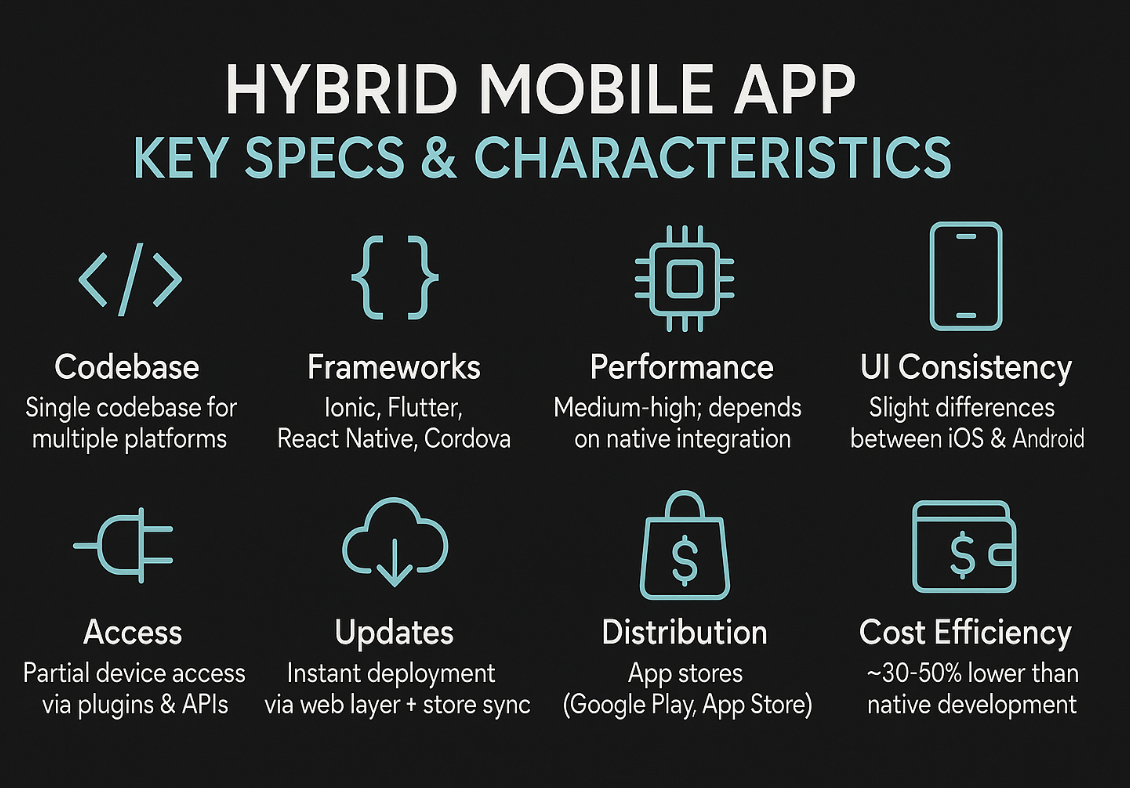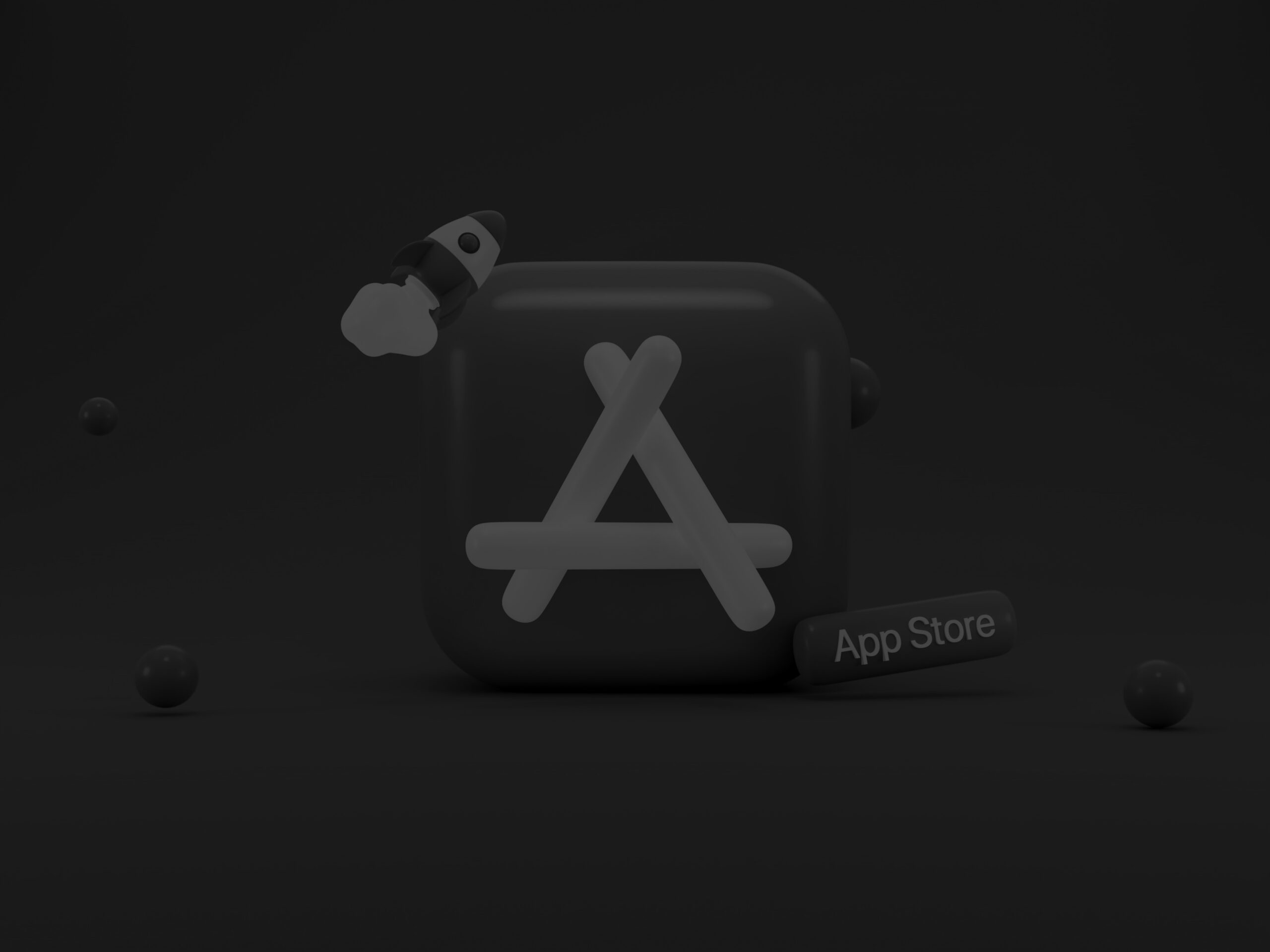Mobile applications now form the operational core of most enterprises, powering communication, sales, and service delivery across every market. Yet maintaining separate iOS and Android codebases remains costly and slows time-to-market, especially for organizations managing multiple digital products.
Hybrid development offers a pragmatic solution. By combining web technologies within a native shell, it enables a single codebase to run across platforms while retaining access to native features and app-store distribution. This approach delivers the flexibility of web development with the reach and reliability of native apps – an advantage that makes the hybrid architecture particularly appealing for B2B teams seeking faster rollouts and consistent user experiences across devices.
According to Forrester Research’s 2025 report, enterprise adoption of unified mobile frameworks, including hybrid models, continues to accelerate as businesses prioritize efficiency, scalability, and long-term ROI. This guide explores how hybrid development works, why enterprises choose it, and what frameworks, processes, and best practices define successful implementation.
Why Choose Hybrid: Business and Strategic Drivers
Enterprises turn to hybrid mobile development not only for budget or speed but because it provides a practical foundation for sustainable growth. In an environment where market demands shift quickly, hybrid offers a model that scales efficiently across operating systems without duplicating resources.
- Faster Time-to-Market
Industry reports indicate that hybrid development can shorten release cycles by up to 40 percent compared with maintaining separate native codebases. Shared components, unified design systems, and centralized testing environments allow teams to deliver updates simultaneously to iOS and Android, keeping release schedules predictable and reducing coordination overhead.
- Reduced Development and Maintenance Costs
Using a single codebase lowers the need for multiple platform-specific teams. Over a full lifecycle, this structure can reduce maintenance and update costs by 30 – 50 percent, particularly for enterprises managing several applications or client-facing tools. Each security fix or UI improvement is written once and deployed universally, saving both time and operational expense.
- Operational Efficiency and Talent Utilization
Hybrid frameworks leverage familiar web technologies such as JavaScript, TypeScript, and CSS. Enterprises can redeploy existing web-development teams instead of building parallel mobile departments. This unified skill set accelerates onboarding, reduces dependency on niche expertise, and promotes collaboration between frontend and backend teams.
- Consistent Brand Experience Across Devices
For organizations that serve clients across multiple touchpoints, consistency is non-negotiable. Hybrid frameworks maintain uniform layouts, transitions, and performance levels on every device, allowing brands to uphold design and interaction standards while minimizing the risk of fragmented user experiences.
Deloitte’s research on enterprise mobile strategy underscores this priority, noting that scalable design systems and consistent user experiences are central to how high-performing organizations sustain engagement across platforms
- Strategic Flexibility and Long-Term ROI
Hybrid architecture integrates easily with existing APIs and cloud services, making it compatible with both legacy and modern systems. It also provides a flexible base for future integrations, whether with AI-powered assistants, voice interfaces, or IoT environments. The cumulative efficiency from shared code, faster iteration, and centralized management translates into long-term ROI that extends beyond initial development savings.
Native vs Hybrid vs PWA
Each development model offers distinct advantages. The best choice depends on a project’s complexity, performance requirements, and desired user experience.
Native apps are built specifically for each operating system (Swift for iOS, Kotlin for Android). They deliver the best possible performance and full access to hardware but require separate teams, longer timelines, and higher budgets.
Progressive Web Apps (PWAs) live entirely in the browser. They’re fast and cost-efficient but depend on network conditions and lack deep hardware access. PWAs are best for content-driven or transactional experiences where discoverability and speed matter more than advanced device features.
Hybrid apps, positioned between the two, combine web technologies with a native wrapper. They can be distributed through app stores like native apps while sharing a single codebase across platforms. This architecture allows faster updates, reduced maintenance costs, and consistent user experience, making hybrid the practical choice for most enterprise-grade mobile products.

For many organizations, hybrid offers the most balanced path, retaining near-native capability while enabling faster, more cost-efficient delivery. Some enterprises even combine models: deploying hybrid apps for authenticated or feature-rich tasks and PWAs for open-access or marketing functions. The result is a layered ecosystem that maximizes both reach and maintainability.
Hybrid Development Process: From Concept to Launch
Hybrid app development follows a clear, repeatable workflow that mirrors modern software engineering principles but simplifies multi-platform delivery. For B2B enterprises, that consistency transforms app projects from one-off builds into scalable digital assets.
1. Discovery and Planning
Every project starts with defining purpose and value. A hybrid app must serve a measurable goal, streamlining client interactions, digitizing internal workflows, or extending an existing web product into mobile. During this phase, teams identify critical features, prioritize integrations, and determine whether offline access, push notifications, or advanced device functions are required.
A well-structured discovery stage saves cost later by aligning stakeholders early and preventing scope drift once development begins.
2. Technology and Framework Selection
The framework decision defines how far a hybrid app can scale and how easily it can evolve. It’s not just a technical preference, it’s a strategic investment that affects hiring, maintenance, and user experience for years.
Most hybrid projects today rely on one of four core frameworks:
- React Native: Backed by Meta and supported by a massive developer ecosystem, it combines near-native performance with broad community libraries. It’s well-suited for SaaS platforms and enterprise dashboards where consistent UX and rapid iteration matter most.
- Flutter: Google’s framework uses the Dart language and a proprietary rendering engine to deliver smooth, pixel-perfect interfaces. It’s ideal for projects where visual polish and animation quality influence customer perception.
- Ionic + Capacitor: Built on web standards (HTML, CSS, JavaScript), Ionic offers the fastest learning curve for existing web teams. It fits projects that emphasize accessibility, fast deployment, and frequent updates.
- .NET MAUI (formerly Xamarin): Maintained by Microsoft, it’s a reliable option for organizations running on Azure or .NET infrastructure, ensuring strong integration and security alignment.
While each framework brings its own strengths, the most important criterion is alignment with internal capabilities, not popularity. The best hybrid solution leverages the team’s existing skills, supports long-term maintainability, and integrates cleanly with the company’s broader technology stack.
For organizations still assembling their development teams, choosing a technology that’s well recognized and easy to hire for can make scaling more manageable. Agencies can help navigate that choice, though it’s worth ensuring their recommendations stem from business needs rather than the technologies they happen to specialize in.
3. Architecture Setup
Once the stack is chosen, architecture defines how the hybrid app communicates between its web layer and native shell.
- The presentation layer (HTML/CSS/JS or a UI toolkit) manages layout and logic.
- The bridge layer (Capacitor, Cordova, or a custom runtime) translates JavaScript calls into native functions.
- The native shell packages everything for app-store distribution and gives access to hardware features such as GPS, camera, or biometrics.
- A modular structure – separating UI, business logic, and data management – keeps the project flexible and easier to scale as features evolve.
4. Development Workflow
Hybrid development thrives on agile iteration. Teams work in short sprints, delivering functional prototypes early to validate usability and performance across devices.
- Shared UI components reduce duplicate coding.
- Continuous Integration/Continuous Deployment (CI/CD) pipelines automate builds for iOS and Android simultaneously.
- Cloud-based tools such as BrowserStack or Firebase Test Lab help simulate hundreds of devices for QA.
Early deployment to internal testers ensures that feedback loops remain tight, accelerating production readiness.
5. Testing, Quality Assurance, and Deployment
Testing in hybrid projects requires verifying both the web and native layers. Functional tests ensure consistent behaviour of shared components, while device-specific tests check camera access, notifications, and offline caching.
Performance testing focuses on perceived speed: the app should feel native, even when rendering through a WebView. Tools like Appium or Detox automate much of this process, helping maintain coverage across platforms.
After QA sign-off, packaging and publishing occur from a unified codebase, streamlining submission to both Apple App Store and Google Play without duplicating work.
6. Maintenance and Scaling
Post-launch, hybrid architecture offers a major advantage: updates propagate universally. A single code update can refresh both iOS and Android versions, keeping parity across devices. Analytics integration (Firebase, Mixpanel, or Segment) then guides iteration based on user behaviour.
Enterprises often adopt release cadences similar to SaaS – monthly or quarterly updates – making mobile experience improvements continuous rather than episodic. As adoption grows, performance can be optimized with lazy loading, caching, and selective native module rewriting for critical components.
Hybrid Mobile Benefits and Trade-offs in the Enterprise Context
Hybrid mobile development appeals to enterprises because it combines technical efficiency with operational control. Still, no technology choice is one-sided. Understanding where hybrid excels (and where it needs careful planning) helps organizations build realistic expectations and measure ROI effectively.
Core Benefits:
- Cost Efficiency
A single codebase cuts down the number of engineering pipelines and QA cycles. Industry reports show that shared-code development can reduce long-term maintenance costs by up to 30–50 percent, especially for organizations managing several mobile products. For enterprises with global operations, this translates to leaner teams, unified workflows, and faster budget recovery after launch.
- Accelerated Delivery
Hybrid development enables simultaneous deployment on iOS and Android. Shared UI libraries and reusable components shorten release cycles and simplify post-launch updates. This acceleration is crucial for B2B products where being first to market or upgrade directly impacts revenue and client retention.
- Simplified Maintenance
Centralized updates mean that new features, security patches, or compliance changes can be applied once and rolled out universally. This reduces version fragmentation, keeps all users aligned, and ensures that mission-critical apps remain secure and up to date across every device.
- Consistent Experience Across Devices
Hybrid frameworks maintain visual and behavioural parity across operating systems. For enterprise apps used internally or by clients, this consistency minimizes training needs and strengthens brand perception. The experience feels native, even when powered by shared code.
- Integration and Flexibility
Hybrid architecture connects easily with APIs, cloud services, and third-party integrations. This flexibility is invaluable for companies modernizing legacy systems or building mobile extensions to existing web platforms. It also positions them well for future technologies such as AI-driven assistants or IoT integrations without re-engineering the app from scratch.
Trade-offs and Challenges:
- Performance Overhead
Although modern frameworks like Flutter and React Native deliver near-native speed, hybrid apps may still lag slightly in highly demanding tasks such as 3D rendering or complex real-time processing. For data-intensive or graphics-heavy use cases, selective native components can bridge the gap.
- Plugin and API Dependency
Hybrid apps rely on community or third-party plugins to access certain device features. If a plugin becomes outdated or unsupported, it can limit access to newer OS capabilities. Enterprises mitigate this risk through modular architecture and regular dependency audits.
- UI and UX Optimization
Hybrid interfaces can occasionally feel less fluid than native ones on older devices or under heavy load. Performance testing across form factors is essential, especially when apps handle high transaction volumes or real-time data streams.
When hybrid development is approached strategically, the benefits far outweigh the trade-offs. It allows enterprises to unify teams, shorten cycles, and stay adaptable, without committing to a costly, platform-siloed future.
Conclusion – Making the Right Hybrid Decision
Hybrid app development represents more than a shortcut between web and native; it’s a deliberate strategy for enterprises that need to move quickly, scale efficiently, and maintain a consistent digital presence across every platform. When implemented well, it reduces development and maintenance costs, accelerates release cycles, and delivers near-native performance where it matters most.
Yet hybrid success isn’t only about frameworks or codebases. It’s about clarity: understanding where shared development makes sense and where selective native optimization drives value. The best results come from projects guided by business logic first and technical execution second.
That’s where LenGreo steps in.
We help companies design and deploy hybrid applications that align with their strategy, operations, and market goals. From architecture planning and performance optimization to long-term maintenance and growth, our team ensures that every line of code supports measurable outcomes.
If your organization is ready to accelerate its mobile roadmap, scale faster across platforms, and deliver experiences that perform as well as they convert, LenGreo can make it happen.










